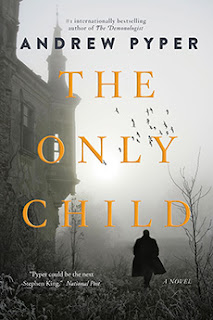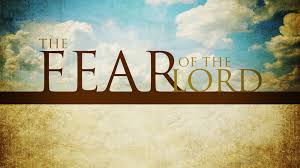Jeremiah is known as the weeping prophet. He cried for
Israel who had turned away from God and for the punishment that was coming. He
ministered for forty years. He delivered very pessimistic messages. A warning
for the people to turn from sin and turn back to God. But the people hated the
message, ignored Jeremiah’s warnings and punished him for it. He had death
threats. He was attacked and persecuted. He saw his fellow prophets murdered
and the people listening to false prophets proclaiming peace (Jeremiah 6:14b).
No wonder he’s called the weeping prophet. There are many lessons and
illustrations used in Jeremiah. I will discuss three of my favorites as well as
a ray of hope among the severe messages.
First, God used the ruined linen belt to illustrate the
uselessness of Israel. In Jeremiah 13:1-11, God asked Jeremiah to wear a linen
belt and told him not to allow it to touch water. He then told Jeremiah to take
the belt to a rock crevice and leave it. After many days, God told Jeremiah to
retrieve the belt from the crevice and examine it. The belt had been ruined and
completely useless from the elements. The Lord then says to Jeremiah, “In the
same way I will ruin the pride of Judah and the great pride of Jerusalem. These
wicked people, who refuse to listen to my words, who follows the stubbornness
of their hearts and go after other gods to serve and worship them, will be like
this belt-completely useless” (verse 9-10). The illustration of the ruined
linen belt shows that actions speak louder than words. Pride can make you
useless to God because it can rot our hearts and leave no room for God’s work
in us.
Second, the illustrations of the potter’s clay and the
broken clay jar were used to demonstrate God’s power over Judah. In Jeremiah
18:1-17, God instructs Jeremiah to watch a potter as he molds the clay. When
defects appeared on the clay, the potter had the power to fix the clay, mold it
in order to repair the defect by reshaping the pot. “O house of Israel, can I
not do with you as the potter does?” declares the Lord, “Like clay in the hand
of the potter, so are you in my hand, O house of Israel” (verse 6). The broken
clay jar in Jeremiah 19:1-12 is the illustration that God has the power to
destroy the nation which doesn’t turn from their sins and like broken jar, it
cannot be repaired. It is a warning to repent before God brings judgment. These
illustrations remind me of the hymn, The Potter’s Hands, as the lyrics urge God
to mold me, to guide me, lead me, to use me as I give myself to God’s hands. As
we are clay in his hands, he will continue to work with us, mold us until he
has finished with us (Philippians 1:6).
Third, the baskets of figs illustrate two types of people
those God will preserve and those he’ll destroy. In Jeremiah 24:1-10, God shows
Jeremiah two baskets of figs, one basket contained good figs and the other very
poor figs. The good figs represent the people God will preserve by sending them
into exile, saving from them the destruction of the land. He also promises to
restore to the land (verses 5-7). They would be saved because their hearts
would respond to God, not because they were good, sinless or perfect. They were sent into exile because they still
needed to be punished for their sins; however, God saw that their hearts were
able to return to him. The very poor figs represents the people who would be
destroyed or flee when the nation was conquered (verses 8-10). These people
were arrogant to believe they were safe and blessed if they remained in the
land or fled to Egypt, they would be destroyed by “the sword, famine, and plague”
(verse 10). The baskets of figs also illustrates the adage of “what doesn’t
kill me, makes me stronger.” Trouble or hard times can be a blessing as it
helps us remain close to God. However, prosperity is a curse as it can entices
us away from God. We need to be mindful of the good times to remain close to
God, to use our prosperity for his glory and our troubles draw closer to him.
Despite the doom and gloom in Jeremiah’s messages, there is
hope. In Lamentations 3, the theme is hope amongst affliction. Jeremiah reminds
himself and us that God, with his great faithfulness, renews us every morning
with a new chance to repent and turn to him (verse 21-23). Every morning is a
new chance from God to follow him. God is the God of second chances and third
chances and so on. We run out of chances when there is no longer breath in our
bodies. Verses 25-26 tells us that “The Lord is good to those whose hope is in
him, to the one who seeks him; it is good to wait quietly for the salvation of
the Lord.” I think is where the adage “good things comes to those who wait”
originated. God’s timing is always perfect and even though our hearts may burn
with desire for whatever we are wishing for, God will bring us this desire when
the time is right. It may be days, weeks, months or even years, God’s timing is
always perfect (Ecclesiastes 3:11). For every good and perfect gift comes from
God (James 1:17).
In conclusion, for forty years, Jeremiah warned the people
of Israel and Judah that if they did not repent and turn to God, judgment would
be brought upon them. Many people mocked him, ignored him and even tried to
kill him. Some were destroyed when the nation was conquered. However, some were
saved. They were taken into exile, to be refined and eventually returned to
their land. The lesson for us is to heed the warnings and repent. In time of
trouble, we may be in exile, being refined and waiting to be returned to
prosperity. As Jeremiah writes in Lamentations 3:40-42a, “Let us examine our
ways and test them, and let us return to the Lord. Let us lift up our hearts
and our hands to God in heaven and say: ‘we have sinned and rebelled” Amen.









































